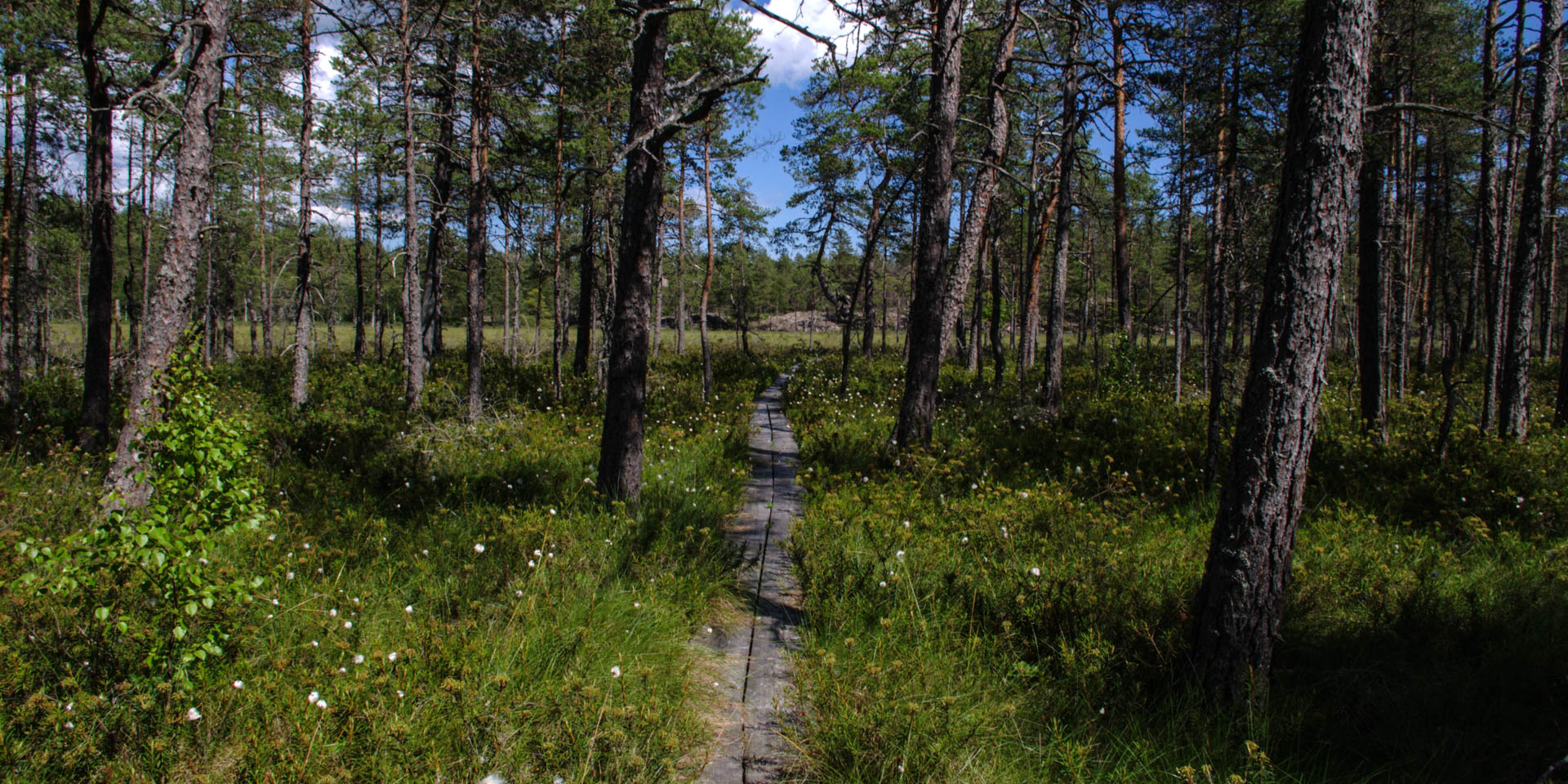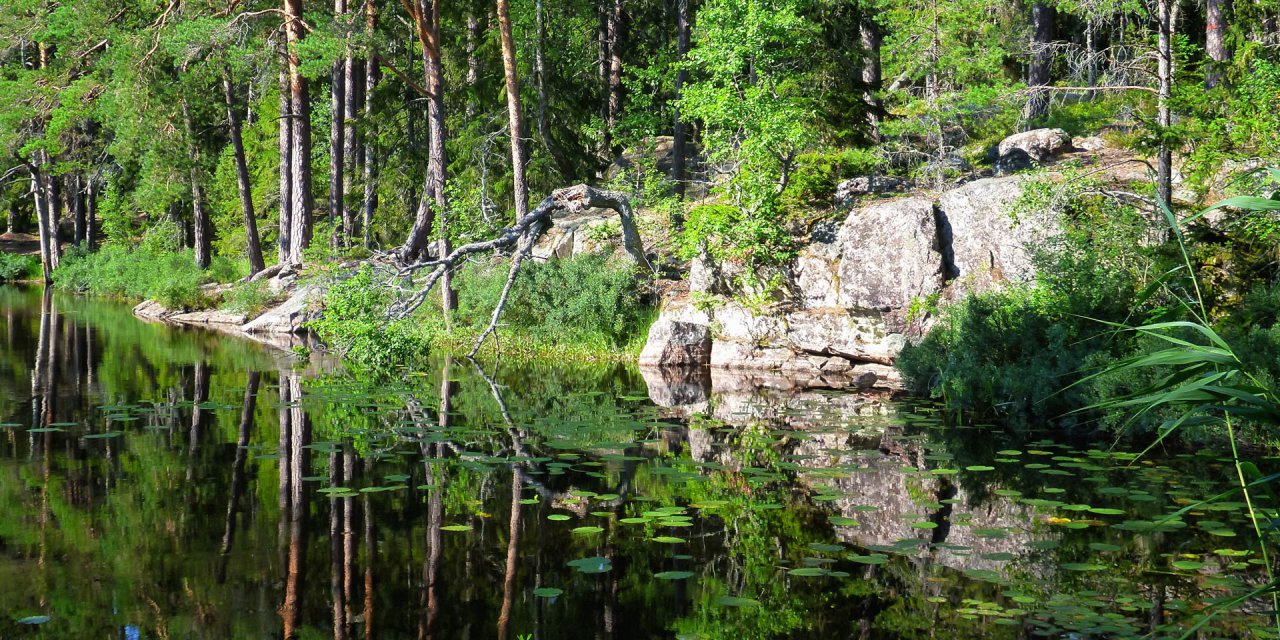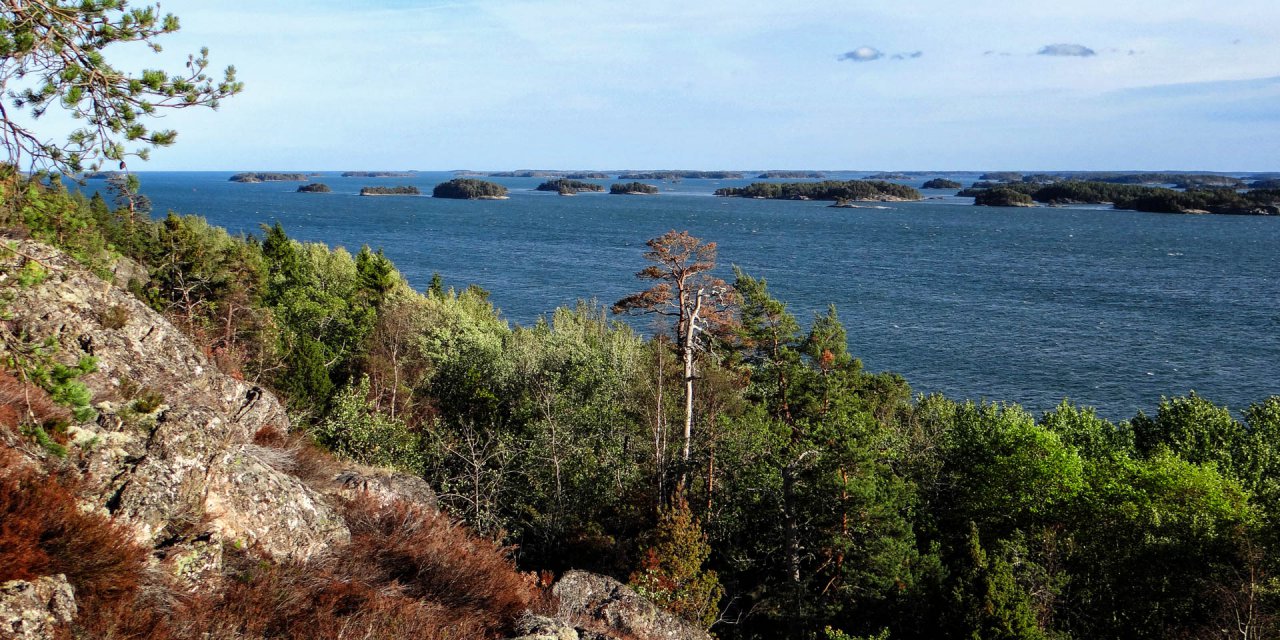

Fjällmossens Naturreservat
Large nature reserve in Kolmården
The nature reserve Fjällmossens Naturreservat is located on the wooded ridge of Kolmården, about 40 kilometres northeast of Norrköping and is one of the largest pristine moor areas in southern Sweden.
With an area of 828 hectares, Fjällmossens Naturreservat extends north of the large animal park Kolmården over the border area of the southern Swedish province Östergötlands Län and the province Södermanlands Län in central Sweden. Almost two thirds of the nature reserve is located in the municipality of Norrköping in Östergötland.
The nature reserve consists to a large extent of open moor landscapes, which are mainly framed by light spruce and pine forests. Most moorland areas are low-nutrient lowland moors fed by groundwater, which rises to the surface through mineral-rich rock layers. A smaller part consists of raised bogs whose moisture comes completely from natural precipitation.
The vegetation in the moors
Low shrubs such as marsh Labrador tea (Rhododendron tomentosum), black crowberry (Empetrum nigrum) or lingonberry (Vaccinium vitis-idaea) predominate on the raised bog areas in addition to small pines. Occasionally, the cloudberry (Rubus chamaemorus), mainly native to northern Sweden, can also be found.
The vegetation in the lowland moors differs significantly from that in the highland moors, since plants have developed there in the course of evolution that can exist under nutrient-poor conditions. These include, for example, sour grasses such as the brown beakrush (Rhynchospora fusca), the creeping sedge (Carex chordorrhiza) or the deergrass (Trichophorum cespitosum). The blossoms of the rare western marsh orchid (Dactylorhiza majalis), which can be found in numerous places in Fjällmossen, provide bright spots of colour across the moors.
Primeval forest and animals in Fjällmossens Naturreservat
Outside the moor areas, there are rocky hills of primary rock that rise out of the wetlands like islands. They have only a thin vegetation layer, on which a kind of mountain forest of low, but partly over 300 year old pines grows. This vegetation can be seen most clearly in the form of the primeval forest Honungsholmens Urskog on the rocky hill Honungsholmen near the main entrance.
The nature reserve is a breeding and resting area for more than 130 different bird species, including those typical of moorland areas such as common crane (Grus grus), Eurasian curlew (Numenius arquata), black grouse (Lyrurus tetrix), green sandpiper (Tringa ochropus), common redshank (Tringa totanus) or wood sandpiper (Tringa glareola). Birds of prey such as ospreys (Pandion haliaetus), common buzzards (Buteo buteo) or northern goshawks (Accipiter gentilis) regularly circle the moorlands.
Hike through the nature reserve
A total of four trails of different lengths lead through the nature reserve. Two trails, the Addmireleden and the Lilla Göljenstigen start at the main entrance northwest of the lake Vrångsjön. Both paths have resting and barbecue areas and at the lake Lilla Göljen there is a toilet, barbecue area and a sheltered place to spend the night.
Another large circular trail is the Lövsjöstigen at the western end of the nature reserve Fjällmossen. It starts at the parking lot three kilometres north of the animal park Kolmården and runs in its eastern part by the hill Linudden at the edge of the largest continuous moorland area of the nature reserve.
The fourth and shortest circular path is the Gammeltallstigen in the south of the nature reserve. It starts east of Fjällmossens By and leads through a primeval forest like area with ancient pines, called Skogsvaktarens Lilla Urskog (Foresters small primeval forest).



